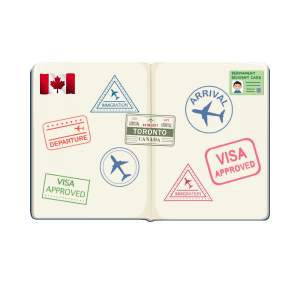Workplace stress and unhappiness can profoundly affect your business. Many business owners care deeply about our businesses, but sometimes caring too much means you may have very high standards of excellence. And you may tend to compound the demands during periods of high growth. This can very quickly lead to you overworking your employees.
Researchers identified overworking as the most significant risk factor for occupational disease, representing approximately one-third of all work-related diseases. This is due to the fact that working long hours can cause chronic stress. People who are overworking may not have enough time for crucial activities such as sleeping, exercising, and eating healthily.
Employees who experience burnout are more likely to leave their roles, and the business then must expend resources to find new recruits and train them. Let’s go through all the impacts of overworking employees and how to avoid it.
What is an overworked employee?
An overworked employee is someone who is subjected to excessive work demands. These demands typically surpass their capacity to manage them effectively within a standard workweek. This situation often arises due to understaffing, unrealistic expectations from management, or an imbalance in workload distribution.
EMPLOYEE WORKING HOURS
Research has suggested that the U.S. is the most overworked nation in the world. As per OECD, Americans work an average of 1,767 hours per year in comparison to the OECD country average of 1,687 hours per year. Many employees find themselves receiving very little paid vacation and holiday leave too. Due to the nature of this work model, it can often become unappealing and make the hiring process difficult.
One of the most significant impacts that overworked employees suffer from is burnout. This global phenomenon is usually the result of an employee with an unhealthy work life balance.
How to Spot an Overworked Employee
Employers can spot signs of an overworked employee through various indicators, including:
- Decreased Productivity: Overworked employees may struggle to maintain their usual level of productivity. Look for a decrease in the quality or quantity of work produced.
- Increased Errors or Mistakes: Overwork can lead to fatigue and decreased concentration, resulting in more errors or mistakes in tasks or projects.
- Physical Signs of Stress: Watch for physical symptoms such as fatigue, headaches, eye strain, or signs of burnout like exhaustion and cynicism.
- Emotional Signs: Overworked employees may exhibit signs of stress, irritability, or frustration. They might also seem more withdrawn or disengaged from their work and colleagues.
- Missed Deadlines or Delays: If an employee starts missing deadlines or delaying projects without valid reasons, it could be due to being overwhelmed with workload.
- Increased Absenteeism: Overworked employees may take more sick days or time off to recover from stress-related illnesses.
- Decreased Initiative or Creativity: Overwork can stifle creativity and motivation. An employee who shows a lack of initiative or is less proactive in suggesting new ideas or improvements might be exhibiting signs of overwork.
- Communication Breakdown: Overworked employees may have difficulty communicating effectively, whether it’s expressing concerns about workload or collaborating with colleagues.
- Physical Appearance Changes: Pay attention to changes in appearance such as weight gain or loss, tired or unkempt appearance, or even changes in personal hygiene habits, as these can be signs of stress and overwork.
Consequences of Overworking Employees on your Organization
Increased Costs
If your team members can’t focus on their job, their work will suffer, impacting your business productivity overall. Overly long days in the office can affect client relationships, meaning work has to be redone, which eats into profit margins, or you end up losing valuable work altogether.
Errors also increase for overworked employees, and as we know, errors can be extremely costly. Errors in payroll, errors in billing, errors in client/customer work. These issues are a result of overworking, and can cost U.S. businesses up to $160 billion annually, according to statistics.
Overtime and overworking often go hand in hand. As any employer can tell you, overtime is costly in terms of payroll! An employee who is working overtime frequently simply cannot sustain their workload. Eventually, it will impact their physical and mental health.
Physical health
According to research from the World Health Organization (WHO), people working 55 or more hours each week face an estimated 35% higher risk of a stroke and a 17% higher risk of dying from heart disease. This is compared to those who work a more typical 35 to 40 hours per week. Researchers observed the highest health problems from overwork among middle-aged men.
Companies in the U.S. face $125 billion to $190 billion yearly in healthcare expenses due to overworked employees.
Increased Turnover
As you can imagine, being overworked can lead to employee dissatisfaction. Employees may not be fully aware of why they’re feeling unhappy at work, but they are sure to start looking for a new job. According to Gallup, employees are around 2.6x more likely to search for other jobs if burnt out.Many businesses are currently offering more flexible hours and appealing work cultures to attract new talent.
The chances of losing staff are higher than ever when they’re overworked. An ‘overwork culture’ is not only counterproductive, but it could also be costly. Turnover is expensive regardless of the type of position an employee holds.
PRESENTEEISM
Businesses rely on healthy and hard-working staff to keep their productivity at a maximum. Yet too often, workplace policies force employees to work unnecessary hours whether it suits them or not.
Presenteeism occurs when an employee is working through a period of sickness to complete their working hours. Due to many employers being unwilling to pay sick leave, it forces many employees to work even when they’re unfit to do so. In the last 12 months, 83% of employees said they’d seen others working while sick as a result of being overworked.
Employees who work through their sickness allow businesses to have a complete workforce day in day out. But it comes at a cost. If this is present in your workplace, you’ll see a clear decline in production levels and negative economic implications.
To put it’s impact into context, productivity loss as a result of presenteeism is three times greater than that of absenteeism. Employees who battle through illness may feel that morally, they’re doing the right thing. But unbeknown to them, their drop in performance is costing U.S. businesses up to 230 billion dollars per year.
How to Avoid Overworking Employees
Set Realistic Expectations
Think about your own communication skills as a manager. Are you giving clear instruction? Are you setting clear deadlines and ensuring your employee has adequate time and resources to achieve that?
Due to misinformation, employees will fail to do what’s expected of them and then may have to do extra work to make up for it as the result. This is one of the ways managers sometimes unknowingly overwork their employees. Before sending your employees to work on a project, ensure that your employees fully understand what’s needed of them.
Encourage a Healthy Work-Life Balance
An unhealthy work-life balance can significantly affect the overall well-being of your employees. In a study by Statista, 72% of respondents consider work-life balance as a crucial job selection factor. Encourage your employees to use vacation days, or maybe offer additional wellness days. Ensure employees are taking their breaks as needed.
Where possible, allow your employees to set their own schedule with flexible scheduling options. OR sometimes it can be as simple as allowing employees to input their availability for shifts. This can allow employees to effectively balance their work and personal time in a more healthy manner.
Build a Care Culture
If your employees can’t take care of themselves, they won’t be able to contribute properly to your business. Building and promoting a self-care mindset in your employees improves the way they handle day-to-day business. When your employees take good care of themselves, they’ll be able to focus while working. This way, they can do more with less and without needing to stress or overwork.
You can also promote a caring culture by assessing and rewarding workers who take good care of themselves. Encourage workers to choose the quality of work over the quantity. Finally, its also important to always be willing to give breaks to employees deserving of one.
Consider developing an employee wellness program. If you’re not already doing this, you’re behind the curve; as of 2020, 81% of companies globally offered a workplace wellness program.
Adopting New Software
Best-of-breed employee scheduling software will help you to track your time and attendance and give you that balanced schedule your workforce needs. Many businesses fall victim to poor scheduling and understaffing, which can ultimately lead to employees being overworked.
Integrating employee scheduling software into your workplace will allow a business to operate by using parameters to control how their employees can be scheduled. Our Employee Scheduling platform gives you the opportunity to define the hours an employee is permitted to work by:
- Restricting the amount of hours employees can work per week.
- Giving the opportunity to add qualifications per employee/site/service so that no one is left out of their depth.
- Allows employees to input when they’re available and healthy enough to work.
- Reduce any human error that may result in overscheduling.
- Use ratios and templates to ensure no shifts are understaffed and no employee is over worked.
Many managers are grateful for the benefits that employee scheduling software provides. And as an indispensable tracking tool, it gives you the clarity you need to create a schedule that is fair and suits everybody.
Employee scheduling software can also lead to improved job satisfaction for your employees. With automated flexible scheduling tools, employees have more autonomy over their schedule which can help prevent burnout.
So, if you’d like to find out how Celayix can ease your overscheduling and overworking worries, get in touch today!









